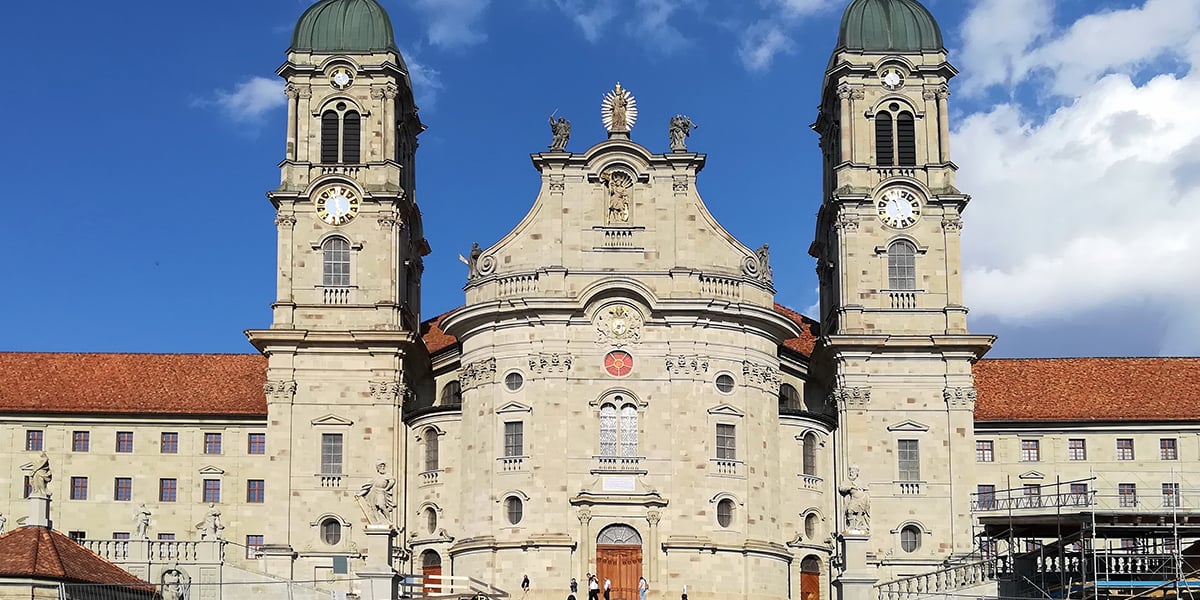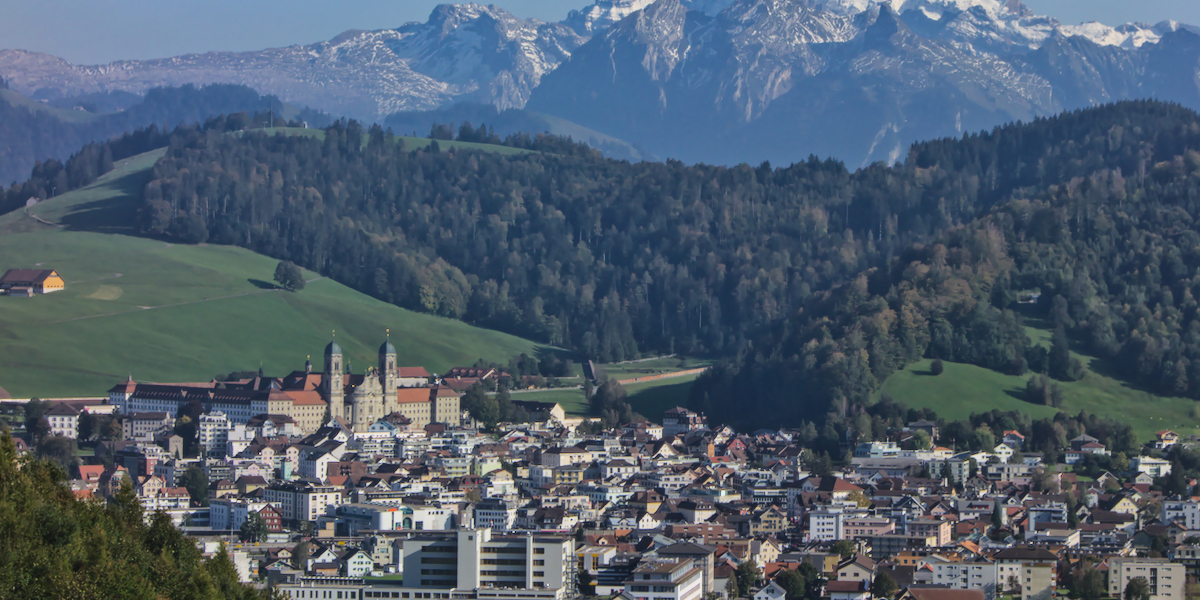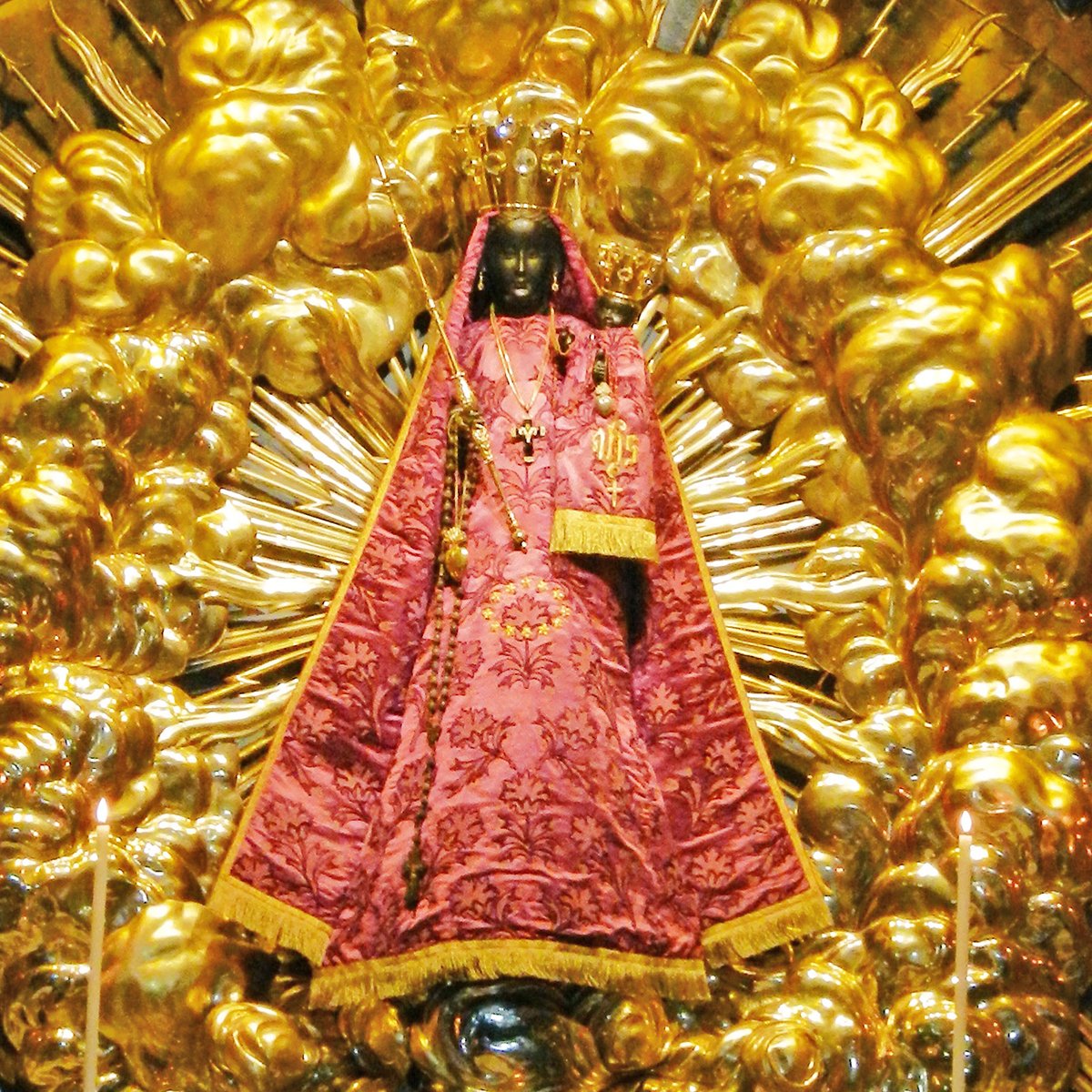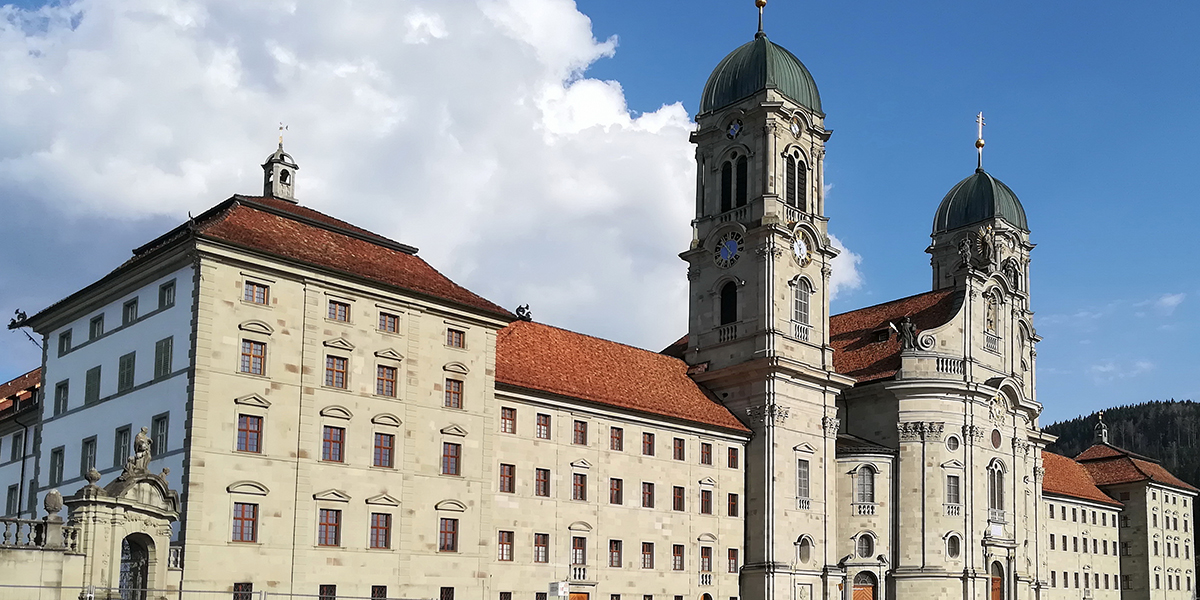Regina Caeli – Queen of Heaven, Rejoice!
The Regina Caeli, Latin for “Queen of Heaven,” is a hymn and prayer ...

In this 7 minute podcast from the Sonrise Morning show on Catholic radio, Dr. Italy continues his discussion of the amazing saints and shrines of the Rhine River area – this time focusing on St. Meinrad and the beautiful Abbey of Our Lady of Einsiedeln, located near Zurich, Switzerland. During the time of Charlemagne, Meinrad, a Benedictine monk, journeyed to the hinterlands of Switzerland and Germany, seeking the solitude of the wilderness to live as a hermit. He carried with him a miraculous statue of Mary, which would later become known as the Black Madonna. St. Meinrad, a martyr of hospitality, has been the inspiration for the founding of many other monasteries, including the Archabbey of St. Meinrad in Indiana.
In the days of the great Emperor of Europe, Charlemagne, there was born a young nobleman named Meinrad. The only education available at the time was at monasteries. So Meinrad was sent by his parents to study at Reichenau Abbey, located on an island in the middle of Lake Constance. There he fell in love with monastic life and joined the island’s Benedictine community as a monk.
But there was too much activity at this century-old abbey to suit him. Following the example of the Egyptian Desert fathers, he longed for total solitude and was given permission to establish a hermitage in wild and dangerous mountain forests. His search led him to Zurich, Switzerland and he visited an abbey of nuns there. The holy abbess, Hildegard by name, gave him a wooden statue of the Madonna renowned for working miracles. She urged him to take this image with him as a sign of our Blessed Mother’s companionship and care as he made his way into the hinterland.
Some 27 miles south of Zurich, Meinrad found the solitude he was looking for in the Einsiedeln forest and set up his simple hermitage, the statue of the Madonna being his only companion. He spent 33 years there in prayer and welcoming pilgrims and travelers, providing hospitality according to the gospel and the rule of St. Benedict.
One day in January, 861, two rough-looking characters appeared on his doorstep. Meinrad knew of their evil intent but opened his home to them anyway, feeding and warming them. These two ruffians were convinced that there were treasurers hidden in the Einsiedeln hermitage. When Meinrad responded that he always gave all gifts away to the poor as soon as he received them, they beat him to death.

Image of Einsiedeln by Steph-Fuchs. CC 4.0
After the death of this martyr of hospitality, pilgrims continued to come to reverence his memory and his miraculous statue. Soon a monastery was founded around a chapel, built over the spot of the hermitage. When the bishop of Constance came to consecrate the chapel, he had a vision of angels. They told him that the Lord Jesus himself had come with the four evangelists and consecrated this shrine to his mother the night before. Therefore, any episcopal consecration would be superfluous.
In the vision, the angels were singing a different version of the Sanctus that hailed the son of Mary, who came in the name of the Lord. When the bishop recounted this to the Pope, the Holy Father confirmed the authenticity of the miracle and proclaimed the chapel to be duly consecrated. He also authorized the monks there forever after to pray the Sanctus according to the wording of the holy angels who appeared there. To this day, over 1100 years later, this version of the Sanctus can be heard in every Mass at Einsiedeln Abbey.

Image of the Black Madonna by Beat Ruest. CC 4.0
In the middle ages, the shrine of Einsiedeln was one of the most important pilgrimage spots in Europe, rivaled only by the Holy House of Loreto and Santiago de Compostela. In fact, no pilgrim from Germany, Switzerland or central Europe would ever think of embarking on the way of St. James before first stopping at Einsiedeln to invoke the protection of Our Lady of Einsiedeln on their journey.
Over the centuries, the smoke from candles and lamps turned the face of the Madonna black, so she, Our Lady of Einsiedeln, is also known as the Black Madonna. It occurred to many that her coloring was providential, reminding us that she is always our protector in the deep, dark moments in our lives when we feel alone and in danger.

Image of the Einsiedeln Abbey by H.Helmlechner. CC 4.0
This Benedictine abbey of Einsiedeln is one of the most important monasteries of Europe. It has been destroyed several times only to be rebuilt again. The miraculous statue from the time of St. Meinrad was destroyed along with the monastery centuries ago, but the replica, itself now centuries old, continues to be revered for the comfort and miracles that have continued to flow to those who come to venerate it.
The monastery and its church are breath-taking in their beauty. The monks there continue to worship the Lord and honor the Madonna, making wine, breeding horses, and guarding one of the most historic libraries in Europe with over 250,000 volumes and documents going back to its earliest days.
Banner/featured image of the Einsiedeln Abbey by H.Helmlechner. CC 4.0
No Comments